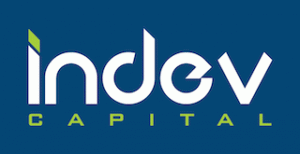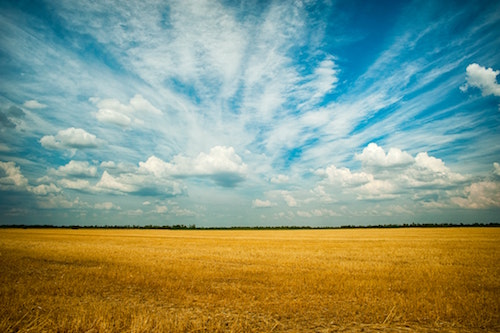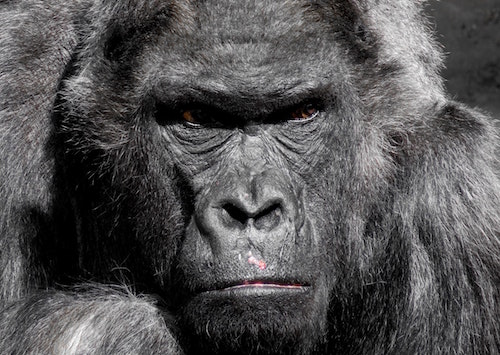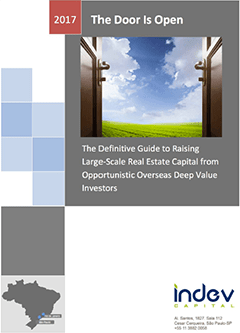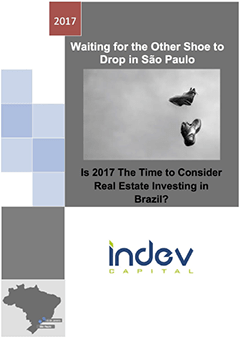
Given the events of the last year, many of us in the global opportunistic credit-oriented investor community have shortened our time horizon for predictions and forecasts. Yet, there are still several discernible, strong trends and movements. And if one looks in the right places, what may have not been immediately apparent can quickly become quite obvious.
One, of course, is that Western Economies, for likely at least the medium term, are in a very low-interest-rate environment. So much so that the traditional “stores of value” and where to search for “risk-free” yield have changed. For example, China’s government debt RMB denominated interest rate of 3.85% is considered a store of value for the first time for many yield-oriented investors.
Second, and related to this low-interest rate environment, there is an almost desperate search for yield, particularly in hard currency (US$ or Euro). One can argue that there is perhaps almost too much money in the financial system. In 2020, nearly 200 SPACs went public and raised about US$ 70B, according to Barron’s. And Tesla’s stock price increased by 808% between September 2019 and September 2020.
Third, with all the significant changes of 2020, besides technology and remote work related businesses like Zoom that have done extremely well, and largely rightly so, a second reality is that businesses that sell essentials are thriving. Pandemic or no pandemic, people will still need to eat and live somewhere. In the United States, for example, 5.64 million homes were sold in 2020, up 5.6% from 2019. And the average home price was $266,104 in December, up 8.4%, or $20,587 over the previous year, according to Zillow. Grocery sales also surged in the US last year. American weekly grocery spending increased by 17% overall in 2020 following a LendingTree poll of consumers, and between May and October meat sales increased by 30%, compared to the same period in 2019, based on data from Grocery Drive.
A key consideration that an opportunistic credit-oriented investor must examine is how to make a high risk-adjusted return in the situation above. More specifically:
 Can the investor build a platform to profit off of these trends in a specific way?
Can the investor build a platform to profit off of these trends in a specific way?- Can it generate high yield income?
- Does it have a significant yield spread per a recapitalization?
What if this opportunity was in a hard currency (Euro or Dollars), offered high yield credit, fully collateralized, and in perhaps the most essential industry in a location that has arguably the world’s most productive and cost competitive production, combined with a strong secular demand story?
Did you guess agricultural production in Brazil? Welcome to the World of Captain Obvious, Brazil Farm Finance! Soon all will be clear and well… rather obvious!
Captain Obvious, High US$ Yield, and Brazil Farm Finance
Purpose of This Newsletter
This document’s goal is to introduce global opportunistic yield and credit-oriented investors to a uniquely off market, large-scale opportunistic credit investment opportunity in Brazil Farmland Finance. It is an opportunity that is particularly well suited for this time in the economic cycle per the list of questions above. Most importantly, project-level yields are in the 10%+ range in US$. Admittedly, this strategy is initially anything but obvious. In fact, research and a deep understanding, exposure and knowledge of Brazil’s agriculture sector is required to have put together this strategy.
When one normally thinks about Brazil from a geographic, business, or financial perspective, many things often come to mind:
- Everyone knows Brazil is a tropical country
- Basic geographic knowledge provides the insight that Brazil is a continental landmass
- Preliminary research on Brazil’s GDP makes it clear that it is an agricultural powerhouse
- Finance or a fixed income background presents the “carry trade” with Brazil’s currency and the country’s historically high-interest rates (1)
For readers of this document, it is a reasonable assumption that there could be a small intellectual leap that these agricultural products were exported. And agricultural exports, as pretty much all commodities, were traded in dollars.
Captain Obvious, for this purpose your author (team InDev), is here to help put the pieces together on how this opportunity, its scale, and current yield combine to create an asset class. By the way, it took me ten years to figure out this opportunity and it will only take you ten minutes – you lucky $#%&!
(1) A carry trade is a trading strategy that involves borrowing at a low-interest rate and investing in an asset that provides a higher rate of return. A carry trade is typically based on borrowing in a low-interest rate currency and converting the borrowed amount into another currency. Generally, the proceeds would be deposited in the second currency if it offers a higher interest rate. (Source: Investopedia)
Brazil for Dummies or Why Agriculture
Structure of the Economy
A Jamaican immigrant entrepreneur friend in Brazil explained to me how Americans often misunderstand Brazil. He told me that a great way to understand Brazil vs. say the USA is to look at the most innovative large-scale companies by market capitalization. In the USA, you see Apple (multi-technology company, founded 1976), Microsoft (multi-technology company, founded 1975), and Amazon (multi-technology, founded 1994) as the top three and in Brazil you see Vale (former state-owned mining company, founded 1942 and privatized 1997), Petrobras (state-owned petroleum company, founded 1953), and Itau (bank, founded 1943) as the top three. If you take a look at the management team that is really world-beating, it is 3G’s ABAmBev (beer company) for Brazil and Amazon (largely the profits come from cloud services) for the USA. The point here is not to disparage Brazil in any way, and as one digs deeper into the history of Brazil, one finds that its economic foundations, innovation, capital markets, and base of educated workforce create a different economic structure. Nonetheless, basic needs matter in emerging markets. And it is hard to find a more basic need than food production. Financing this production in Brazil, a high cost of capital country, can be quite lucrative.
Scale
Only five countries are larger in population than Brazil and only four have a larger landmass. Brazil has a continental scale rivaled by very few nations. While obviously China and India are in a class by themselves, below that level in “transitional economies” there are just not many large comparable nations. It has the world’s ninth largest economy and is the leading exporter of numerous (agricultural) products. It is also one of the world’s most culturally diverse countries and one of just 17 countries designated as environmentally mega-diverse. Brazil boasts 7,491 kilometers (4,655 mi) of coastline and significant freshwater resources like the Amazon River (the world’s largest by discharge) and Pantanal wetlands (the world’s largest tropical wetlands). And the Amazon Rainforest represents over half of the planet’s remaining rainforests and comprises the largest and most biodiverse tract of tropical rainforest in the world.
Middle Income Trap
The Boom
During the commodity supercycle from the mid 2000s to 2012, Brazil ran large fiscal surpluses, there was a tremendous amount of credit pumped in the system, and it appeared that Brazil was on track to escape the middle-income trap. More specifically, federal expenditures increased from 15.1% of GDP in 2003 to 18.1% of GDP in 2010, while net federal tax revenue increased from 17.4% of GDP to 20.2% during the same period. While this increased spending was supported by the increase in taxes (which in turn was supported by the period of growth) and was partially directed towards poverty reducing social programs, it became problematic as commodity prices began to drop.
As a result, the government enacted a number of credit programs aimed at increasing consumer spending in order to quell the reductions in economic growth. But as commodity prices continued to drop, and government spending continued to increase through the new credit programs, the entire system became unsustainable.
Upon These Shoulders, Agriculture Carries the Country
Yet, during the peak period of economic expansion, between 2003 and 2008, GDP growth actually averaged about 5% per year and was the longest period of uninterrupted growth in 30 years. Particularly, given the strong currency at that time, GDP per capita even reached US$13,245 in 2011. This actually was fueled by an increase in exports between 1998 and 2004, in total volume and not in prices, which served as a precursor to this period of continued growth. In fact, the current trade account moved from a deficit of 4% of GDP in 1998 to a surplus of 1.8% by 2004, largely spurred by agriculture.
But Why Isn’t Brazil Rich?
However, and this is important, it is hard to reach rich nation status without significant productivity and value added work. Massive agricultural exports, while great for the business we are about to discuss, are not enough to make a country rich and particularly to produce enough high paying jobs to drive GDP per capita. Post commodity super cycle, Brazil has normalized in the US$8000 to US$9000 GDP per capita range of a middle income nation, clearly at least for now stuck in the middle income trap.
Brazil, like most middle income countries, has been unable to escape the middle income trap. In order to do so, total factor productivity must involve moving up the manufacturing, service, or agriculture value chains toward higher value-added activities involving more technology, higher-quality human capital and thus strong educational systems, robust financial markets and advanced infrastructure.
Opportunity Knocks
While Brazil has made improvements in a few sectors (petroleum, aircraft production, and agriculture, for example), an overly concentrated banking and financial system and antiquated infrastructure, among other factors, have limited this growth. However, these same factors (the significance of agriculture in Brazil’s economy and Brazil’s problematic banking system) are precisely those that make Brazil Farm Finance not only feasible, but a great opportunity!
Why You May Not Have Invested in Brazil Before

Elephant (or Gorilla?) in the Room – Currency
Importantly, the investment strategy which we are discussing is in US$, so BRL is not a factor in our Brazil Farm Finance strategy, but a background on Brazil’s currency is important as to why this opportunity is below radar. Most investors would not search for high yield US$ investments in Brazil. Why? They have been spooked by the volatility of the currency.
For US$ investors, the volatility of the BRL, while it can be managed, is something that is quite important to understand in order to make a business decision. For US$ financial investors, the risks of not hedging the local currency can be significant. In fact, candidly, in our recent transactions, investors have hedged the currency.
The BRL’s volatility is based on the following:
- The BRL is always highly susceptible to global volatility
- Increasing risk premiums due to political issues (the need for macroeconomic and public sector reforms) and slowed economic growth
- The base interest rate nearing its effective lower bound
- High financial openness which allows for the easy entry and exit of dollars
- A small national spot dollar market compared to a large derivatives market
Importantly, and here is a case study to prove it, often for opportunistic investment opportunities, the available returns can overcome these hedging costs, but an investor must be selective.
The above currency complexity hides this US$ based investment opportunity from many investors.
Cost of Capital
Today, Brazil has a highly concentrated banking sector. A little history to illustrate this point. In 1964, São Paulo had less than one-third of national bank headquarters and most banks were regional, with 328 in the city in total. During the 1970s, a number of federal banking sector deregulations occurred, allowing for banks to merge and consolidate. By 1980, only 111 banks remained and São Paulo headquartered six of the ten largest banks in the country. Today, the financial services industry is dominated by just five institutions which hold approximately 93% of retail assets under custody, 80% of all consumer loans and 79% of all deposits, according to data from Oliver Wyman Management Consulting and the Central Bank of Brazil. In other words, with so few players in the game, there is little incentive to innovate. Compounding this is the relative isolation of Brazil’s banking system vis-a-vis the rest of the world. This, at the least, discourages innovation and provides a window for collusive actions to occur.
Central Bank interest rates (SELIC) also peaked at 14.25% in July 2015 and now stand at just 2%. However, the structural issues behind Brazil’s traditionally high rates still stand. Brazil’s Central Bank has a strict set of regulations to control the banking industry (and with good reason, given the hyperinflation and banking collapses of the 1990s); however, financial system stability comes at the cost of economic growth and cost of credit. In fact, Brazil’s required reserve ratio averaged 50% between 1994 and 2020. For comparison, the US Federal Reserve lowered the required reserve ratio to 10% in 1992 for bank holdings above a given threshold (and actually lowered it to 0% in March 2020).
All of this means that Brazil has a very high cost of credit. In a 2019 ranking of 63 countries, Brazil had the highest cost of credit, and it’s overall competitiveness considering cost of credit ranked only ahead of Croatia, Argentina, Mongolia, and Venezuela. At that time (in pre Covid economics), Brazil’s bank spread (between bank interest rates charged for loans and rates paid) was 32%. The average across all of the other countries was 3.8%.
Agriculture – Almost 25% of the Economy – Significantly Dollarized
It is hard to overstate the importance of agriculture to Brazil’s economy, exports, foreign reserves, history, and its impact on the country’s ability to navigate political and economic cycles and challenges.
Between 2000 and 2014, the land dedicated to commodity row crops (corn, soybeans, sugarcane, and cotton) nearly doubled from 26.0 Mha to 46.1 Mha. Along with this, land productivity has also increased. Corn, for example, has averaged 5.7% annual productivity gains in the last 10 harvests. Brazilian agricultural production is one of the main components of the country’s economy, accounting for approximately 22% of Brazilian GDP. Since agricultural commodity trading is typically conducted in dollars, this opportunity allows for investing in this growing sector in Brazil, but without the need for significant exchange rate hedging.
Additionally, in 2018, based on data from The Observatory of Economic Complexity at MIT, Brazil was the world’s largest exporter of Soybeans ($33.2B), Sulfate Chemical Woodpulp ($8.26B), Raw Sugar ($6.67B), Poultry Meat ($6.05B), and Frozen Bovine Meat ($4.57B). In that same year, Brazil was also the world’s largest importer of Pesticides ($3.04B), Nitrogenous Fertilizers ($2.38B), Phosphatic Fertilizers ($431M), Malt ($371M), and Hydrazine or Hydroxylamine Derivatives ($212M). In other words, Brazil’s trade flows are based on agricultural products and the supplies needed to make them happen.
Many medium and nearly all large farming operations in Brazil function as companies. Even medium farms count on on-site management, and some of the largest farms are even publicly traded, with boards of directors, CEOs, CFOs and their own legal counsel. The degree of sophistication of modern Brazilian agribusiness cannot be understated.
Not to be incessant, but it is key to remember that Brazil’s major agricultural exports are international commodities with prices set in dollars. In other words, this opportunity benefits from this massive and critical sector in Brazil, without the currency costs traditionally associated with doing business in Brazil.
Brazil Farm Finance – Right Time, Right Sector, Right Strategy
 Although agriculture is the largest industry sector in Brazil, many capital and financial needs of farmers are not being met efficiently.
Although agriculture is the largest industry sector in Brazil, many capital and financial needs of farmers are not being met efficiently.
For example, for many medium sized farmers, working capital comes on an annual basis through pre-sale contracts with trading companies and pre-payment at discount rates of around 1% a month. This provides them with a small revenue margin, but locks them in to selling a set amount of product at prices that are more favorable to the lender (the trading company) in order to repay the loan. If market prices increase, the farmer is unable to explore this in the free market. And this cycle repeats itself year after year. In the long term, it makes it very difficult for them to make capital investments in their operations or purchase more land.
As an alternative, farmers often turn to the barter system to purchase more land. Unable to pay in cash because of the lack of long-term financing, they close a purchase with a land seller under an agreement to pay a cash equivalent set of bags of crops per year, over a predefined period of time.
Brazilian banking regulations require financial institutions to provide various types of rural credit. However, in reality they too are limited as most credit lines are concentrated in inefficient public-owned banks. Private banks often just provide the minimum options required by law, often have high rates, and do not direct much effort to these programs since these are not a focus area of the banks. Additionally, in most cases these lines are provided only to small scale farmers, leaving middle level operations, the focus of our investment strategy, with no choice but to turn to the two options discussed above.
Yet, when one considers the amount of stored value in medium-large and large farming operations, the scale of this opportunity becomes clear. Many of Brazil’s wealthiest families have recognized this and invested in farmland. Yet, for most farmers this stored value and potential liquidity is trapped due to the lack of credit options available for real growth.
Indeed, Brazilian agriculture is not only important to the global economy and food chain, but it is a critical component of the national economy. However, its true potential is not being met, and one major factor in this is the market gap/problem of available credit under the current system. With this identified, and with the right team in place, there is a huge opportunity available.
What Must Be True To Be Successful
 In order for such a transaction to be successful, it is not sufficient to only have financial knowledge and recognize the market gap. Significant on the ground agriculture knowledge and experience are essential. Brazil’s continental size means there are productive and arable lands from north to south, but not all of these regions are created equal. Some are more suited to certain practices than others, but with the right knowledge and monitoring practices, lands that were once unproductive are now providing some of the highest crop yields. This opportunity requires the above deep knowledge of Brazilian agricultural lands.
In order for such a transaction to be successful, it is not sufficient to only have financial knowledge and recognize the market gap. Significant on the ground agriculture knowledge and experience are essential. Brazil’s continental size means there are productive and arable lands from north to south, but not all of these regions are created equal. Some are more suited to certain practices than others, but with the right knowledge and monitoring practices, lands that were once unproductive are now providing some of the highest crop yields. This opportunity requires the above deep knowledge of Brazilian agricultural lands.
Additionally, a deep familiarity of the Brazilian agricultural ecosystem and network is fundamental. For example, Brazil is the largest global importer of a number of pesticide and fertilizer products. Various types of irrigation systems may also be necessary, depending on regional conditions. Engagement and connections with these and other essential supplier networks are key for not only farming success, but also foundational for the success of this Brazil farm finance opportunity.
You may remember from my previous newsletters that Brazil has a complex legal and bureaucratic structure. This is true for land titling, as well. Various types of registries, environmental compliance and other considerations are factors that cannot be ignored for proper farm management. Years of experience navigating these systems, especially if that experience includes management of not only one’s own lands but in a farm management and administration capacity for others, is also indispensable. Similarly, given the transaction size of this opportunity, experience with farming enterprises at scale, volume, and number of farms under management is paramount.
Finally, but of utmost importance, is having the structures in place if things go wrong in the case of default. A combination of operational experiences can ensure that this risk is mitigated. Various options could be pursued, whether leasing the land and managing a structured sale or direct farming and production on the property in question. However, a management team that has the flexibility to employ either solution is ideal.
At this point, you may be wondering, if this is such a great opportunity, why has it not been done until now? Well, to execute such a platform, one would need the perfect set of qualifications. Unfortunately, people that know specialty finance are not farmers. And likewise, those with extensive farming experience tend to not have deep knowledge of finance. Even so, as was discussed above, there is a deep need for working capital, so most farmers do not have the cash on hand to pursue such a venture. Overcoming that hurdle, one would still need experience in managing large portfolios and to be in the farm management business already to ensure success. Finally, even if one was able to bridge that gap between finance and agriculture, one would still need the sophistication to recognize that this opportunity is not just a typical investment opportunity, but actually is creating a new asset class.
Next Steps
 This is a very unique opportunity to create an asset class in the most important sector of the Brazilian economy, with dollar-based returns and project level yields above 10%. If only there was a farmer–an agribusiness executive team, actually–that not only had the above qualities, but combined those with global farming and finance experience (in the United States and Brazil) and multiple generations of family involvement in the sector, that thinks like an investor, already has an extensive record of farmland portfolio management, can put seeds in the ground and manage the land in case of default, and has their own capital available to co-invest.
This is a very unique opportunity to create an asset class in the most important sector of the Brazilian economy, with dollar-based returns and project level yields above 10%. If only there was a farmer–an agribusiness executive team, actually–that not only had the above qualities, but combined those with global farming and finance experience (in the United States and Brazil) and multiple generations of family involvement in the sector, that thinks like an investor, already has an extensive record of farmland portfolio management, can put seeds in the ground and manage the land in case of default, and has their own capital available to co-invest.
What if I told you that this team actually exists?
Email me at joseph.williams@indevcapital.com if interested and happy to send a teaser!
